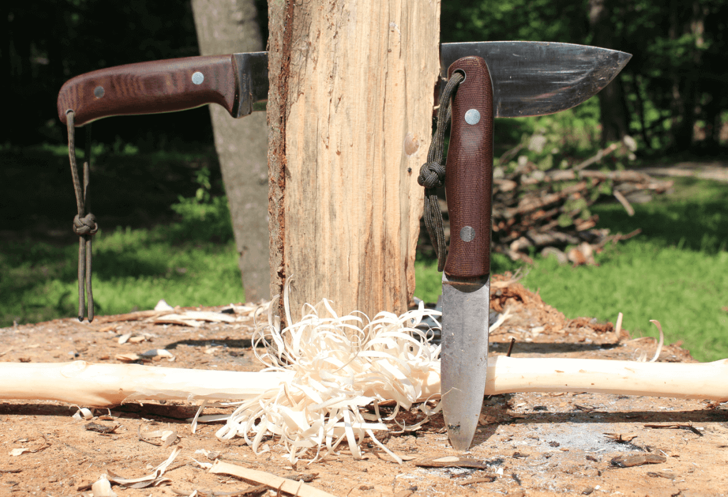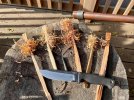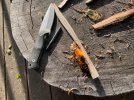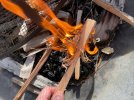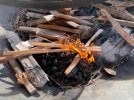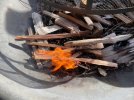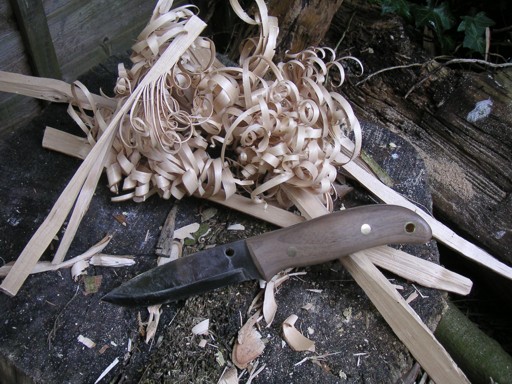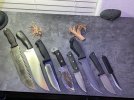- Joined
- May 29, 2004
- Messages
- 2,720
Hey Folks!
I just spent a little time on the deck practicing my wet wood fire making with a knife that was recently re-ground by our own D davidmary .
It’s a Scrap Yard Knife Co (SYKCO) “Alpha Dog” in INFI steel. It was a bit thick behind the edge for woods use for me from the factory, but now it’s a great cutting field knife.
It’s been raining for days here so I grabbed a chunk of seasoned oak from the pile, chopped it in half, split it open (after carving a wedge to help), then feathered a bit. The knife did beautifully. I used my Entrek (spine on the SYKCO is coated and I wasn’t about to jack up the edge for no good reason!) with a ferro rod and got a little flame. The knife stropped back to shaving sharp in about 4 minutes with some diamond grit - go INFI!!
Do you have any fire making pics? Feel free to post!
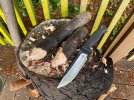
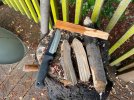
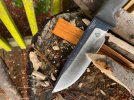
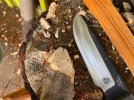
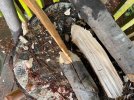
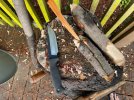
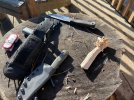
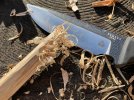
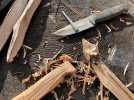
I just spent a little time on the deck practicing my wet wood fire making with a knife that was recently re-ground by our own D davidmary .
It’s a Scrap Yard Knife Co (SYKCO) “Alpha Dog” in INFI steel. It was a bit thick behind the edge for woods use for me from the factory, but now it’s a great cutting field knife.
It’s been raining for days here so I grabbed a chunk of seasoned oak from the pile, chopped it in half, split it open (after carving a wedge to help), then feathered a bit. The knife did beautifully. I used my Entrek (spine on the SYKCO is coated and I wasn’t about to jack up the edge for no good reason!) with a ferro rod and got a little flame. The knife stropped back to shaving sharp in about 4 minutes with some diamond grit - go INFI!!
Do you have any fire making pics? Feel free to post!









Last edited:









